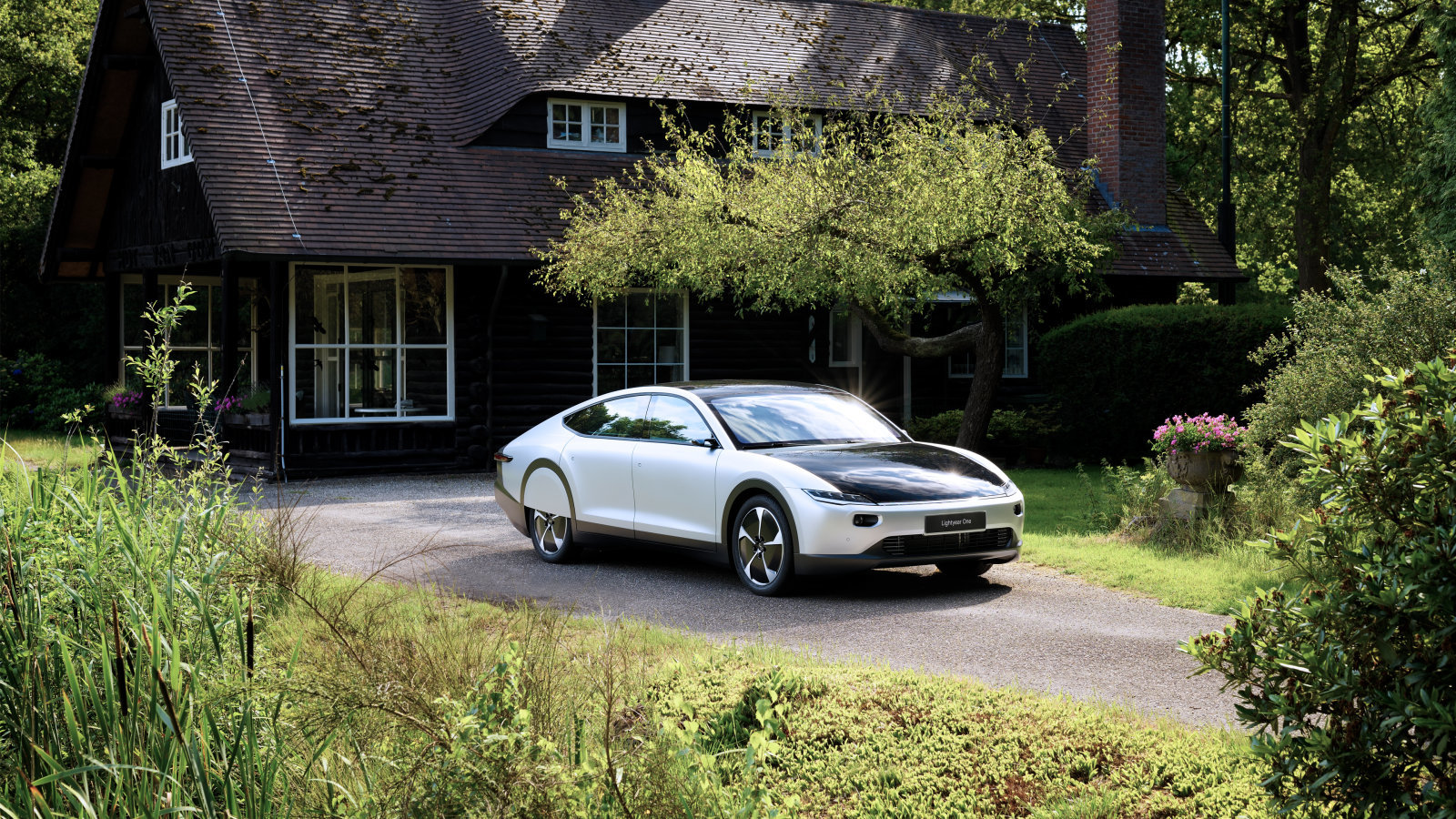It’s hard not to feel warm fuzzy feelings about the small team who are producing the Lightyear One.
This is a new electric car which grew out of the team at Eindhoven who won the Solar Challenge a few years ago, and it’s interesting for a couple of reasons. First, they’ve focused on efficiency, meaning that the car travels much further on a kilowatt-hour than, say, a Tesla. And secondly, all the roughly-horizontal surfaces are covered in solar cells. This is a car that really can charge itself.
It doesn’t do it very fast, of course; we’re still a long way from just driving around on pure sunshine. It does have decent-sized batteries, and you can plug the car in and charge them just as you would on any other EV (and get a range of over 400 miles).
But, on a bright sunny day, the solar panels generate a bit more than a kilowatt. And because of its efficiency, that translates to about 7 miles of distance per hour of sunlight. That may not sound like much, but it’s roughly the rate you would accumulate miles from a standard 13A socket with a traditional EV.
And think of it this way: if you live in a sunny climate and park in the company car park for your eight-hour working day, it might well manage your trip home and back to the office again without you normally needing to plug in at home at all.
Yes, it’s expensive, and yes, it’s not production-ready for a year or two, and yes, most of us, even if we have that much cash, don’t have that much sunshine. But the key thing is that they’re making a car that is significantly more efficient, puts less load on the grid, and is, I think, rather beautiful.
I hope I may own a Lightyear one day. I’ll call mine ‘Buzz’.

I thought it was in your driveway already 🙂